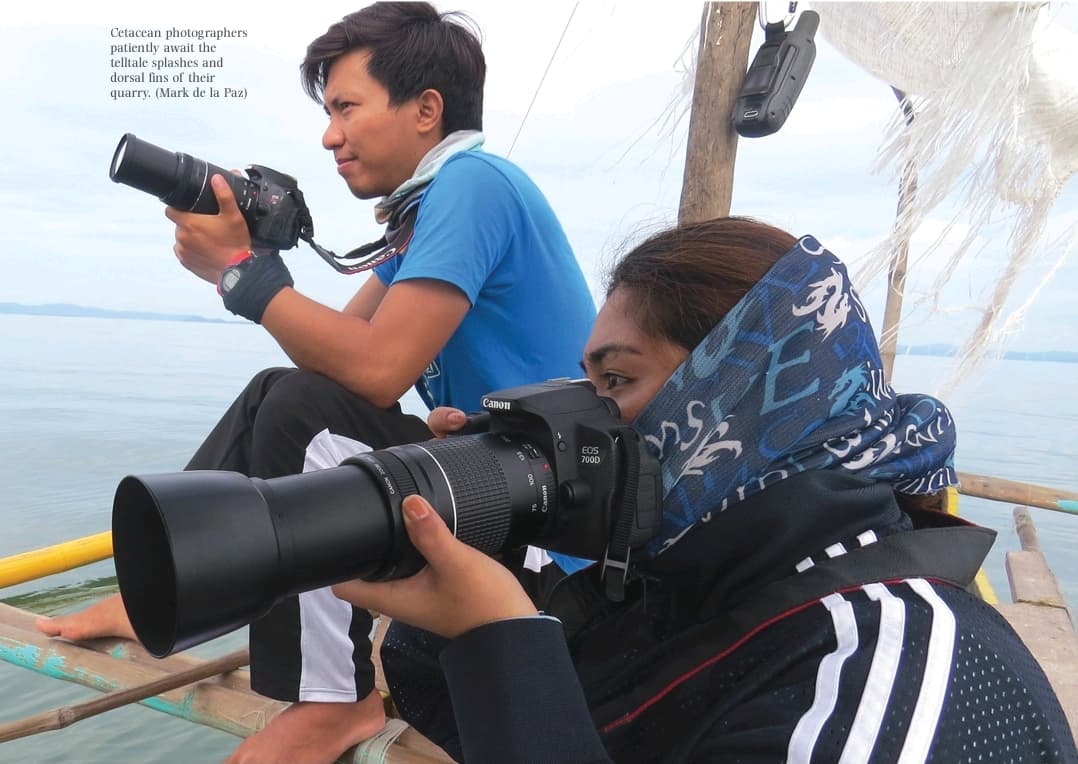Irrawaddy Dolphins (Orcaella brevirostris) are small dolphins who look a bit like dugongs. Reaching just under three meters in length, scattered pods can be found in coastal and brackish waters from the Philippines to India.
Bycatch: Bye, dolphins
Irrawaddy Dolphins are dolphins considered critically endangered within the Philippines. Initially known from a 77-strong population inhabiting Palawan’s Malampaya Sound, the dolphins garnered attention when scientists realized that the population had dwindled to around 35 individuals. Most of the mortalities were caused by entanglement in fishing gear – a phenomenon called bycatch – which kills thousands of dolphins, turtles and other charismatic marine critters every year.
Fish friend
Despite threats to their existence, new Irrawaddy Dolphin populations have been confirmed in Southern Palawan, plus the coastal waters of Negros and Panay. This month, we meet a teacher working to help save the dolphins in the Visayas.

Mark de la Paz works as a research associate at the Center for Research and Engagement of the University of St. La Salle (USLS) in Iloilo.
He’s also a partner of Balyena.org and Marine Wildlife Watch of the Philippines, two organizations working to conserve whales, dolphins, and other charismatic marine creatures. Lastly, he helps push for cetacean conservation as a member of the Philippine Aquatic Red List Committee.
“My work as a researcher is focused on monitoring and conducting studies on a critically-endangered subpopulation of Irrawaddy Dolphins in the Guimaras Strait. Our data is used to assess the conservation status and threats to this population and will hopefully be used by concerned government agencies to properly manage and conserve remaining populations,” he said.
Research saves lives
Mark’s office, the Center for Research and Engagement of USLS, is the research arm of the university, catering to all research needs. Through this office, his team was able to secure grants to continue their research on the dolphins.

“We’re currently monitoring the Irrawaddy dolphin population in the Guimaras Strait. This involves looking at their population size, membership, movement patterns, habitat range, and dietary aspects,” explains Mark. “We monitor stranding events and work closely with local government units and local stakeholders to conserve the dolphins and their habitats by establishing marine protected areas in their core habitat.”
His team educates local fishers and students on the importance of conserving the dolphins and their habitats as well as capacitating them to take the lead in these efforts.
Community effort
Mark envisions a future with fewer dolphin mortalities and more baby dolphins, plus a healthier habitat with less human impacts and a coastal community that is actively involved in conservation.

“We really need help in educating more communities and convincing these dolphins plus their habitats,” concludes Mark. “On a national level, we need help in getting the attention of the national government to be mindful of them in relation to the planned construction of an inter-island bridge between Negros and Guimaras island.”
The Visayan population of Irawaddy Dolphins is estimated to number no more than 18 individuals, so swift conservation action is needed to prevent localized extinction.
If you’re interested in lending Mark’s team a hand, then you can contact the Lumba Project on Facebook.
This appeared in Animal Scene magazine’s November-December 2020 issue.
You might want to read:
– Robot dolphins created to replace real animals in captivity
– Whale and dolphin watching in Bais: Animal Scene sails to Cetacean central in search of dolphins
– Spotted: Dwarf spinner dolphins sighted in Tanon Strait for the first time






